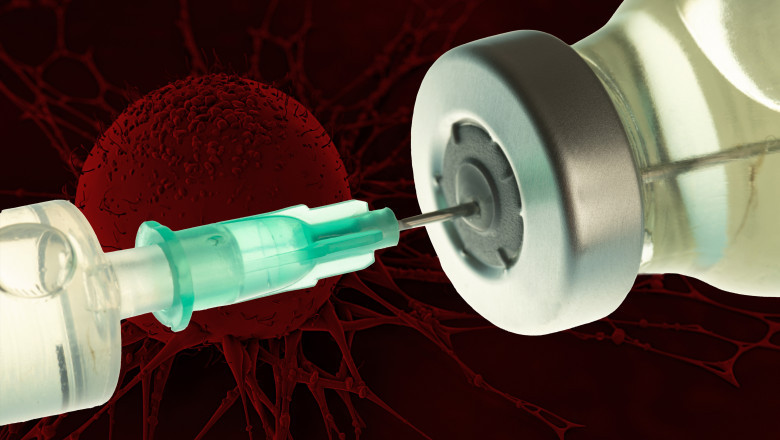views
Therapeutic Vaccines: A New Frontier in Cancer Treatment

Introduction
In recent years, the landscape of cancer treatment has undergone significant transformations, shifting from traditional therapies like chemotherapy and radiation to innovative strategies that harness the body’s immune system. Among these advancements, therapeutic vaccines have emerged as a promising approach, offering the potential to not only prevent cancer but also treat existing tumors. This article delves into the science behind therapeutic vaccines, their current applications, challenges, and the future outlook in oncology.
Understanding Therapeutic Vaccines
Unlike prophylactic vaccines, which are designed to prevent disease by generating an immune response against pathogens (like the flu or HPV), therapeutic vaccines aim to stimulate the immune system to attack existing cancer cells. These vaccines work by presenting tumor-associated antigens (TAAs) or neoantigens—unique markers found on the surface of cancer cells—to the immune system. By doing so, they train the body’s immune cells, particularly T cells, to recognize and destroy cancer cells.
Mechanisms of Action
Therapeutic vaccines can be categorized into several types based on their mechanisms of action:
1. Peptide-based Vaccines: These vaccines use short chains of amino acids that correspond to specific TAAs. By introducing these peptides into the body, the immune system is primed to recognize and attack cells expressing these antigens.
2. Dendritic Cell Vaccines: Dendritic cells are powerful antigen-presenting cells that play a critical role in initiating immune responses. In this approach, dendritic cells are harvested from a patient, exposed to TAAs, and then reintroduced into the body to stimulate a robust immune response.
3. Viral Vector Vaccines: These vaccines use harmless viruses to deliver TAAs or genes encoding these antigens into the body, effectively instructing the immune system to mount a defense against cancer cells.
4. Whole Cell Vaccines: This approach involves using entire cancer cells or genetically modified cells to elicit an immune response. By presenting a full spectrum of antigens, these vaccines may enhance the likelihood of immune recognition.
Current Applications
Therapeutic vaccines are being studied in various types of cancer, including melanoma, prostate cancer, and breast cancer. One of the most notable examples is sipuleucel-T (Provenge), an FDA-approved vaccine for prostate cancer. It is designed to stimulate an immune response against prostatic acid phosphatase (PAP), an antigen expressed in many prostate cancers.
Another promising candidate is the mRNA-based vaccine, which gained prominence during the COVID-19 pandemic. Companies like BioNTech and Moderna are exploring the use of mRNA technology to create personalized cancer vaccines that can target unique neoantigens specific to a patient’s tumor. Early clinical trials have shown encouraging results, suggesting that these vaccines can elicit strong immune responses and potentially improve patient outcomes.
Challenges in Therapeutic Vaccine Development
Despite the potential of therapeutic vaccines, several challenges remain:
1. Antigen Selection: Identifying the right antigens to target is crucial. Tumors can express a variety of antigens, and selecting those that will elicit a strong immune response without harming healthy tissues is complex.
2. Immune Tolerance: Cancer cells can develop mechanisms to evade immune detection. Understanding how to overcome this immune tolerance is vital for the success of therapeutic vaccines.
3. Patient Heterogeneity: Each patient’s immune system is unique, leading to variability in how individuals respond to vaccines. Personalizing therapies may be necessary, but this adds complexity and cost to treatment.
4. Combination Therapies: Many researchers believe that combining therapeutic vaccines with other treatments, such as immune checkpoint inhibitors, may enhance efficacy. However, determining the optimal combinations and timing remains an area of active investigation.
Future Outlook
The future of therapeutic vaccines in oncology appears promising, with ongoing research aimed at overcoming current challenges. Advances in genomics and personalized medicine are paving the way for more tailored approaches. By sequencing tumors and identifying unique neoantigens, researchers hope to create individualized vaccines that can effectively target a patient’s specific cancer.
Moreover, the integration of artificial intelligence and machine learning is expected to expedite the discovery of new antigens and improve the design of vaccines. These technologies can analyze vast amounts of data to predict which antigens will generate the most robust immune responses, streamlining the vaccine development process.
The collaboration between academia and the pharmaceutical industry is also crucial for the advancement of therapeutic vaccines. Clinical trials are essential for validating new approaches and ensuring that vaccines are both safe and effective. As more candidates move through the pipeline, the hope is that therapeutic vaccines will become a staple in the oncologist’s toolkit.
Conclusion
Therapeutic vaccines represent a revolutionary approach to cancer treatment, shifting the paradigm from conventional therapies to immunotherapy. While challenges remain, the potential to harness the body’s immune system to fight cancer is a tantalizing prospect that could lead to more effective and personalized treatments. As research progresses and technology advances, therapeutic vaccines may soon play a central role in the fight against cancer, offering hope to millions of patients worldwide.
See the full article: https://www.nextmsc.com/blogs/cancer-vaccine-market-trends






















Comments
0 comment